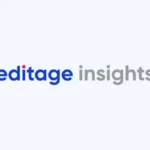Demystifying open access: What early-career researchers need to know

Open access (OA) has become a vital innovation how we publish and disseminate scientific data. OA is more than just another publication option; it represents a fundamental paradigm shift in how researchers engage with the latest information. A growing proportion of papers are now published in OA publications, and this trend shows no signs of stopping.
However, OA is not a monolithic system. Based on the demands of both researchers and publishers, various OA models have emerged. The range of OA options has increased to encompass many overlapping strategies, each with merits and weaknesses.
A brief history of open access
In the paper-only era of publication, access to journals was exclusive. Researchers and students were limited only to the journals that could be found in their libraries, and purchasing copies of papers or volumes could often be expensive for individual researchers. This made research especially difficult for scientists in countries that were poorer or were under embargo for political reasons.
The first networked computing projects allowed researchers from different institutions to connect directly with their peers and share manuscripts and data, completely forgoing the traditional channels for research publication. This led to researchers creating the first OA journals as purely collaborative efforts in the 1980s. Soon after, the first preprint servers, such as arΧiv, were already active before the internet was made fully public in 1993. These grassroots efforts showed that researchers wanted the ability to publish and access information freely, both in the gratis (free of charge) and libre (free from restriction) senses.
Why nearly everybody is shifting to open access
The ability to read freely has made OA attractive to all researchers. Likewise, the opportunity to reach larger audiences makes OA attractive to both publishers and researchers, allowing them to gain greater prestige from their papers. Furthermore, liberating information has been argued to be a public good. By allowing the free dissemination of information, we can maximize the benefits of a piece of research to accelerate future discoveries and make the most of the public resources that drive most research funding. Operating under this reasoning, several governments have proposed measures in support of OA, ranging from the US White House Office of Science & Technology policy (which aims to make taxpayer-funded research immediately available for the public to freely access and fully use) to the EU’s interest in diamond open access.
Accordingly, OA publications have been heavily promoted both by top-down governmental initiatives and a change in the culture of scientific reporting driven by researchers just like you.
Competing models of open access
OA is not simply making articles available to read for free. After all, how can publishers fund their activities if they do not ask for money to access their articles? In response to this, various means of monetizing OA have emerged.
Interestingly, there are even geographical differences in terms of preferred OA style, further underlining that researchers have gravitated towards certain OA paradigms depending on their needs. As such, it’s important to understand how the various OA models to help select the right journal according to your needs.
As so many forms of OA exist, researchers have developed a color-coding system to categorize various OA publications. Here, I provide a brief breakdown of these “colors.”
Gold OA
As the name might suggest, gold OA offers various attractive points. In gold OA publications, once a paper has passed peer review and typesetting, it will instantly be available online for all readers free of charge. Typically, the paper will be available under an open license that allows self-archiving or redistribution. Naturally, gold OA offers a very favorable service to readers, and can maximize your ability to reach the largest possible audience.
On the flip side, gold OA publications will take an article processing fee (APC) from the contributor in exchange for publishing the article. These APCs may range from a few dollars to over USD 3,000. This is the major downside to gold OA for early career researchers—APCs can be prohibitively expensive for those with lower budgets. Fortunately, reputable gold publishers do not invoice APCs until the paper has passed peer review.
Green OA
Green OA is the traditional “rival” to the gold OA model. Rather than demanding an APC, green OA journals will publish articles freely, and not request payment to access the paper. So what’s the difference between the green and the previous two types?
The key difference is self-archiving. The author makes the preprint version available freely online at their discretion. Then, the final version is sent to the journal for peer review. If accepted, this version becomes the version of record (VOR), which is the only peer-reviewed version. The publisher will maintain the copyright to the article and make this version available free of charge, while any version before and after the VOR is at the author’s discretion. Additionally, the article is often subject to an embargo period, within which a self-archived version is not available. This is fine for many researchers, but it can violate some institutional or other restrictions that stipulate that the self-archived versions be made available instantly.
Diamond or Platinum OA
In most descriptions, Diamond and Platinum OA refer to the same thing: an OA journal offering a similar model to gold OA without demanding APCs. Naturally, this model is very attractive to researchers. After all, who wouldn’t like to publish a fully OA peer-reviewed paper for free? Naturally, this model comes with a catch: Diamond OA publishers do not collect money from either readers or authors, which limits the opportunities for the publisher to make profits. As these publications are at the mercy of funding from grants and donations, they are often limited in terms of scope or number of papers published.
Bronze OA
Bronze OA usually refers to any OA publication that publishes papers openly, but does not use an open license such as Creative Commons. As such, while they are “open”, there can be limits on their use. For example, they may limit the reprinting or reproduction of the material therein, which can limit their appeal to readers. Furthermore, as these papers are unlicensed, they can plausibly become paywalled, further posing potential issues.
Hybrid OA
Hybrid OA usually refers to publications that offer both OA and paywalled options for the same journal. Hybrid OA is often offered by existing publications that were previously subscription only. Hybrid OA can be attractive to researchers who wish to publish in reputable journals regardless of their budget.
Finally, publishers are often not bound to a single OA model for every publication they offer. Take Springer Nature’s publications for instance while Nature and its sister journals offer hybrid OA, it also offers the gold OA journal Scientific Reports.
|
|
Paywalled |
Gold |
Green |
Bronze |
Diamond |
Hybrid |
Preprint |
|
Read for free? |
No |
Yes |
Only for the self-archived version(s) |
Yes |
Yes |
Only for OA articles |
Yes |
|
Publish for free? |
Mixed |
No |
Yes |
No |
Yes |
Depends on journal and OA status desired |
Yes |
|
Peer reviewed? |
Yes |
Yes |
Yes (VOR only) |
Yes |
Yes |
Yes |
No |
|
Licensing |
Varies by publication |
Open, decided by journal |
Open licensed, copyright of VOR held by journal |
None or unclear |
Open, decided by journal |
Depends on paper type |
Author’s choice |
|
Time to OA |
N/A |
Instantaneous |
Usually comes with an embargo period |
Instantaneous |
Instantaneous |
Instantaneous |
Instantaneous |






